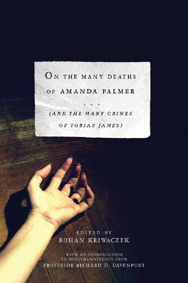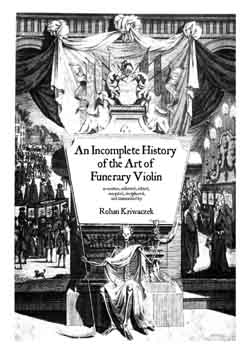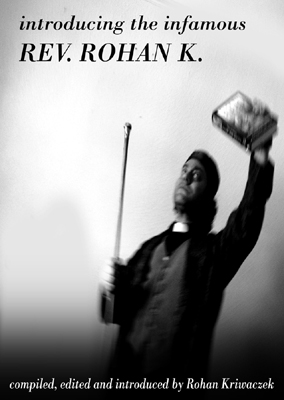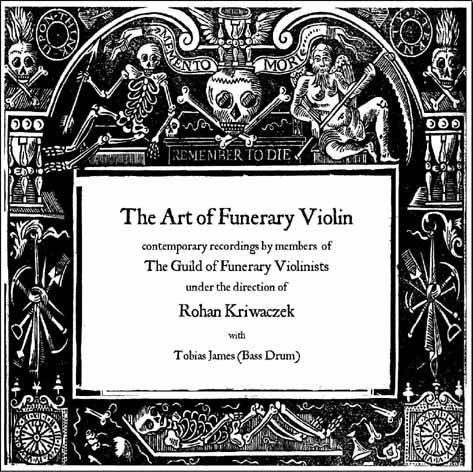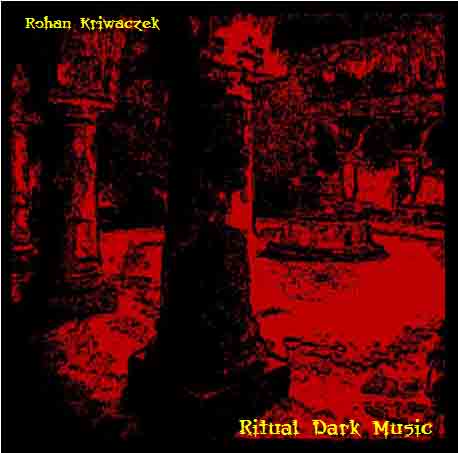to download this article as an ebook click here
page 7 of 7
In the long run Nilsson did earn his place in the History of Funerary Violin, though not for his playing so much as the copious accounts of his day-to-day life as recorded in his journals. Indeed there are no accounts of his playing whatever, so far discovered, other than his own, and without corroborating evidence it is impossible to have any real idea of his abilities, either technical or musical, as it is clear from his writing that he had a tendency towards self-aggrandisement at times bordering upon delusion. However, in the light of all that has been lost, these journals do represent an invaluable wealth of information and contemporary comment on the Art of the time, even if its value is somewhat tempered by the unusual personality of Nilsson himself and the unique and isolated situation he sought out for the expression of his Art.
Hidden within the many thousands of pages are occasional details and comments which scholars of the Art of Funerary Violin have found particularly tantalising: most notably those pertaining to Herr Gratchenfleiss. Rarely do a number of pages pass without some form of reference to Herr Gratchenfleiss, though in most cases, as has been seen, it takes the form of an invocation to a poetical muse, and offers little that is useful in the way of facts. However, it is in his lists of repertoire that he incidentally offers us possibly the fullest account of the works of Herr Gratchenfleiss yet uncovered. It was Nilsson’s habit to record which pieces he had played at each funeral. Initially the lists are often brief and vague but by 1786 he was recording each individual piece (though often with the exception of the processionals) and by 1800 his daily entries also record which pieces he had practiced or played through during the day. In all he mentions 77 works of which only 6 have survived. In addition we know that all of the works he mentions were composed before 1781, when Herr Gratchenfleiss presented him with the book of music, which sheds new light on the dates of the pieces discovered in the Hildesheim Trunk. The music book itself is regrettably not among the papers in the possession of Hildr Hök, and she believes it was sold, along with Nilsson’s fine Gofriller violin, in 1922. Sadly, being a young girl at the time, all she can recall is that the instrument, and a number of the papers, were bought from her grandfather by a middle-aged German man called Heinrich who gave her a red ribbon for her hair and a couple of boiled sweets. That a copy of this book had survived until 1922 is, in itself, remarkable, and raises some hopes that it might today be in the hands of a library or private collection waiting to be found and brought to light.
In 1803 Ola Nilson married Hælga Skjaldvör, a local girl from Harstad, who was then only 17 years old. Their long courtship, covering a period of eight months during which time his attitude towards the local townspeople gradually changed from disdain and condescension to a grudging respect, takes up over 150 pages of the journals, but is not relevant to this particular history, save that she was evidently a gifted musician, and came from a family of Hardanger Fiddlers; and that she performed with such beauty that even the cruellest of hearts cannot fail to be moved. Over the following four years she bore him two sons, Ola Nilsson II, who was ultimately to take up his father’s Art, and Andor Nilsson, who died at the age of three.
On December 12th 1807 Ola Nilsson (I) died of what was probably a heart attack (it is known that he had developed a considerable fondness for Walrus fat and drank a little too much Illvilja). That would have been the end of the story were it not for the unexpected determination of both Hælga and Sjöblom to preserve his Art. The last entry in volume 47 of the journals, written in Hælga’s untutored hand explains:
My beloved Ola, who saved me from the dismal life of my forebears, died last Sunday in the early hours, after a sudden collapse. I will miss him eternally, for my heart is now forever broken. I am not much one for writing but felt that this, his final chapter, should be recorded in these, the journals that he so loved to keep. The greatest tragedy of all is that there was no one present who was skilled in the Art to which he had so dedicated his life, and thus his funeral passed without the music that he so loved. I played the saddest tunes I knew on my Hardingfele, but it was not as it should have been, and at the end I vowed quietly to myself that I would take up his violin and learn to play, not for myself, but that I might teach my sons the Art that had brought their noble father to this place, for Ola had taught me the reading of notes, and I know something of the style from hearing him play.
After the funeral gathering had passed and I had returned to our cave with Sjöblom and the boys, a miracle occurred, for Sjöblom spoke, in a weak though deep voice never heard before. Oh, if only Ola had been here to hear, though it was probably the shock of seeing his master buried without the appropriate musical rites that moved him to break his silence. He offered no explanation but spoke to say that his name was Knut, and that he would teach me the skills of my husband for he had watched him for many years and knew how his fingers worked the music; and I am now confident that we can, between us, resurrect the Art that was lost when he departed.
I will not be writing here again, considering that my duty is now done and that the great book of his life that he compiled with such diligence and love has now been closed forever.
May he rest in peace, in the knowledge that his legacy will be preserved and that his sons, and grandson’s, will be taught the very skills that he himself brought to us from a faraway place many years ago.
My darling Ola, I will love you forever.
This touching final entry proved to be more than merely a naïve intention as the other bundles of papers found with the journals include many records that demonstrate a dynasty of Funerary Violinists that lasted a further four generations. Among them there are invoices and receipts for services rendered, letters of thanks and a number of photographs. Of course, whether their performances bore any resemblance to those of Ola Nilsson I will never be known.
By 1840 the family money had run dry and Ola Nilsson III was forced to earn his living as a fisherman, performing Funerary Violin to supplement his income. Indeed Harstad was always too small and remote a town to ever support a professional Funerary Violinist and it was only the private income that enabled Ola Nilsson I and II dedicate their whole lives to the Art. Both Sjöblom and Hælga lived remarkably long lives: Sjöblom died in 1856 at the age of 94, and Hælga died in 1867 aged 81. The last of the Dynasty, Ola Nilsson V died in 1906. |

